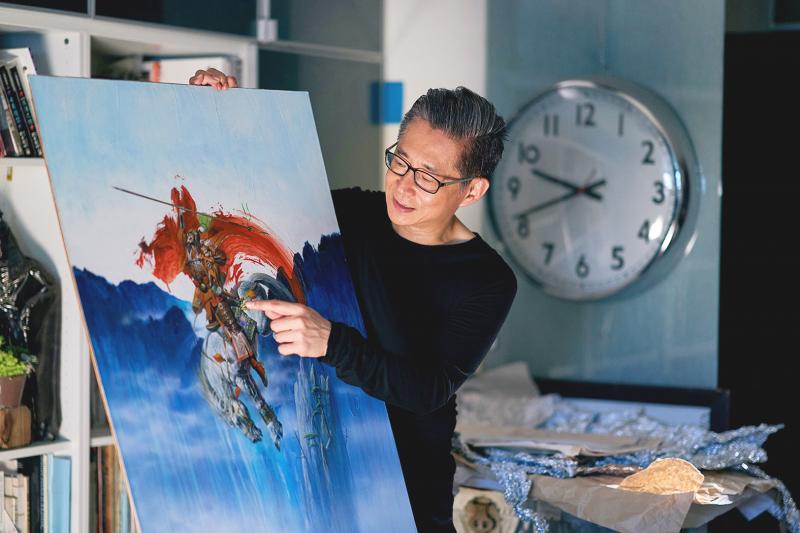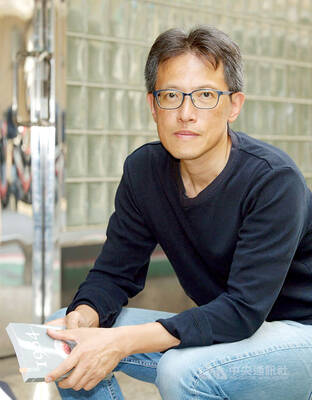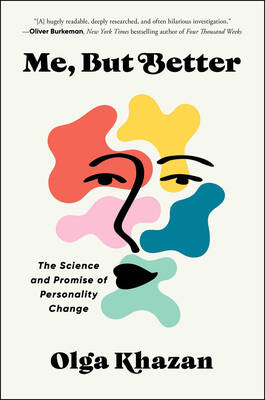Given that this reviewer managed to stay awake for the entire 135 minutes of Chen Uen (千年一問), it feels like the eponymous subject lived much longer than his 58 years. It’s a curious documentary since it was made entirely after Chen Uen (鄭問), the pen name of artist and illustrator Cheng Chin-wen (鄭進文), died of a heart attack in 2017. Viewers only get to know Chen through his vivid artwork and the people he met.
Some old footage of Chen is used, but only sparingly, as he’s mostly portrayed as a silent animation, solemnly strolling through his old haunts and finally visiting his 2018 posthumous exhibition at the National Palace Museum.
Director Wang Wan-jo’s (王婉柔) attention to detail is stunning, fully capturing the essence of the era in each stage of Chen’s life through music, framing, graphic details and recreated scenes. Even the backdrops to the talking heads are carefully designed and at times echo Chen’s artwork, making the entire film a visual feast despite a huge part of it being straight up interviews.

Photo courtesy of Activator Marketing Company
Chen undoubtedly had tremendous talent and deeply inspired the people around him as he moved from venture to venture and locale to locale, and that’s what makes up the bulk of the film. His fantastical, colorful and unrestrained artwork is tastefully brought to life through animations, and his wide range of creative methods are painstakingly recreated, such as splashing ink onto the page out of frustration or searing the paper with a lighter.
To people who knew him, Chen was a man that kept his feelings bottled up. Many say that he was a repressed, reclusive and melancholic soul who never seemed truly happy, and yet seemed to have a passion for life and the people around him. Assistants speak of his extremely high demands, yet fondly recall that he would routinely take them out of the office to smoke cigarettes and stare at the ocean. Despite spending years away from home, once his son expressed interest in following in his father’s footsteps, Chen devoted himself to passing on his techniques.
Fans of Chen will definitely be drawn to the film for obvious reasons, but for this reviewer, who was only vaguely familiar with his work, it induces an aching sense of regret of being too late to the game, even missing the exhibition two years ago, and a strong urge to run to a bookstore and begin poring through his work.
Part of the film’s watchability is the honesty Wang was able to draw out of many of the interviewees — oftentimes homages to a respected artist like Chen would result in an endless gushing and heaping of praise onto the deceased; and while there is indeed a lot of that, they also provide blunt insight into why Chen was not as successful or influential as he could have been. It also reveals some of the secrets of his creative process that more than one interviewee mentions that they would have been “silenced” for spilling if Chen were alive.
The audience gets glimpses of Chen’s personality (besides his unyielding perfectionism to his craft) through such offhand comments, but who he really is remains somewhat of an enigma as he was a man of many contradictions. After viewing the film, we seem to know so much yet so little about Chen as a human being.
One can only wonder what the documentary would have been like if Chen were alive to participate in it, but maybe that doesn’t matter. His artwork probably tells his story the best, painstakingly detailed and exact but also bursting with unbridled energy and expressiveness; a visionary pure artist who in death still remains way ahead of his time.

Three big changes have transformed the landscape of Taiwan’s local patronage factions: Increasing Democratic Progressive Party (DPP) involvement, rising new factions and the Chinese Nationalist Party’s (KMT) significantly weakened control. GREEN FACTIONS It is said that “south of the Zhuoshui River (濁水溪), there is no blue-green divide,” meaning that from Yunlin County south there is no difference between KMT and DPP politicians. This is not always true, but there is more than a grain of truth to it. Traditionally, DPP factions are viewed as national entities, with their primary function to secure plum positions in the party and government. This is not unusual

More than 75 years after the publication of Nineteen Eighty-Four, the Orwellian phrase “Big Brother is watching you” has become so familiar to most of the Taiwanese public that even those who haven’t read the novel recognize it. That phrase has now been given a new look by amateur translator Tsiu Ing-sing (周盈成), who recently completed the first full Taiwanese translation of George Orwell’s dystopian classic. Tsiu — who completed the nearly 160,000-word project in his spare time over four years — said his goal was to “prove it possible” that foreign literature could be rendered in Taiwanese. The translation is part of

Mongolian influencer Anudari Daarya looks effortlessly glamorous and carefree in her social media posts — but the classically trained pianist’s road to acceptance as a transgender artist has been anything but easy. She is one of a growing number of Mongolian LGBTQ youth challenging stereotypes and fighting for acceptance through media representation in the socially conservative country. LGBTQ Mongolians often hide their identities from their employers and colleagues for fear of discrimination, with a survey by the non-profit LGBT Centre Mongolia showing that only 20 percent of people felt comfortable coming out at work. Daarya, 25, said she has faced discrimination since she

The other day, a friend decided to playfully name our individual roles within the group: planner, emotional support, and so on. I was the fault-finder — or, as she put it, “the grumpy teenager” — who points out problems, but doesn’t suggest alternatives. She was only kidding around, but she struck at an insecurity I have: that I’m unacceptably, intolerably negative. My first instinct is to stress-test ideas for potential flaws. This critical tendency serves me well professionally, and feels true to who I am. If I don’t enjoy a film, for example, I don’t swallow my opinion. But I sometimes worry